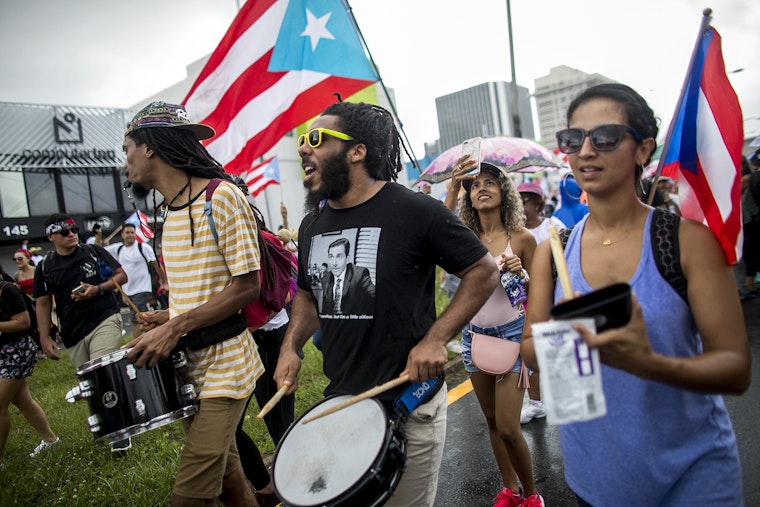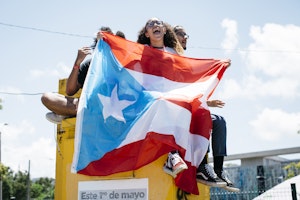The Right Way to Help Rebuild Puerto Rico
By Karina Claudio Betancourt & Rosanna Torres

It’s been three years since Hurricane Maria tore through Puerto Rico, leaving a trail of death and destruction in its wake. Some 3,000 people died, hundreds of thousands more fled the island, and damages reached the billions of dollars. In the days surrounding the September 20th anniversary, many news outlets reported on the state of Puerto Rico’s recovery. The bottom line: progress has stalled and few residents share the government’s celebratory tone.
On the upside, Governor Wanda Vázquez recently held a press conference to announce a $13 billion allocation from the U.S. Federal Emergency Management Agency under Section 428 of the Stafford Act. The funding stream, drawn from an existing national disaster relief fund, specifically allocates funding to Puerto Rico’s Electric Power Authority and the Department of Education.
The pledge of funding for new projects is a positive step. But Puerto Ricans can be forgiven for being skeptical about the Trump administration’s claims. While Congress approved aid in 2018, the president publicly opposed providing disaster relief to the island, and the appropriated moneys have been slow to arrive. What’s more, while politicians often define success by the dollar amount announced in the press release, what people care about is the results. The level of funding is meaningless unless it has a direct impact in the communities most affected by the disaster.
For three years, Puerto Ricans have heard promises of having a “blank slate” to redesign their future while continuing to suffer under disastrous policies imposed by authorities they did not elect and cannot hold accountable. The austerity agenda imposed on the island by the Financial Oversight and Management Board has further complicated the recovery process. The board’s austerity program led to dramatic cuts in government expenditures and curtailed government-provided services, hampering Puerto Rico’s capacity to respond effectively to the disasters that have followed Maria—the multiple earthquakes that struck the island in the past two years, and the pandemic that has ravaged the island in 2020.
While the announcement of new federal funds may be something to celebrate, Puerto Ricans have more than a few reasons to respond with skepticism and concerns. How will citizens be able to track the impact of this $13 billion, when they do not yet know what the previous $17 billion in Federal Emergency Management Agency funds supported? Will local officials most accountable to the people be released from the federal red tape that has forced them to burn millions of dollars of vital aid money on consulting and compliance firms rather than aid and development? Given the recent privatization of Puerto Rico’s energy grid, will this aid help those facing constant outages and exorbitant utility bills or the corporations looking to take advantage of the new law? And, coming less than two months before the election, will this money ever actually arrive, or is this more of a campaign stunt designed to appeal to voters in Florida, home to a growing population of Puerto Ricans who have settled there since the storm?
Congress appropriated billions in Community Development Block Grant money for Puerto Rico three years ago. This source of funding is preferred by state governments because it allows local officials the discretion to invest directly in the projects that will rebuild the island in ways that make it more resilient than before. But the federal government decided to impose a series of onerous restrictions on Puerto Rico’s Community Development Block Grant money that make it nearly impossible to spend the funds. Those restrictions were not extended to other jurisdictions that suffered from Maria’s ravage—such as Florida and the U.S. Virgin Islands. As a result, much of the money is not yet in evidence on the island, and it’s hard not to see these restrictions for what they really are: punishment disguised as oversight.
Puerto Rico’s colonial relationship with the United States and the controlling hand of the Oversight Board make it exceedingly difficult for the island to design and execute its own path forward. Indeed, the multiple layers of authority the island is subjected to stand in the way of success.
Just weeks before the Federal Emergency Management Agency’s funding was announced, the same federal government filed a petition to the U.S. Supreme Court justifying limitations in Puerto Rico’s ability to participate in the Earned Income Tax Credit program, the Supplemental Nutritional Assistance Program and the Supplemental Security Income program—benefits most Americans take for granted. And for decades, Washington has denied Puerto Ricans the ability to make decisions on their own economic future by not letting its people decide what political status serves its residents best.
As we look to 2021, it is time to adopt policies and processes that give Puerto Ricans agency over how to build back from Maria—and make a collective commitment to creating a sustainable economy that can survive and thrive long after federal disaster relief has dried up. It is time to give Puerto Ricans agency over their own futures and clear away the federal oversight clutter that holds them back. It is time for Puerto Rico to determine its own future, whether in how to rebuild in the way of tragedy or how to define its future on its own terms. Only then will we see the storms subside, and clear skies ahead.
Karina Claudio Betancourt is project director for Open Society’s Puerto Rico Project.
Rosanna Torres is director of the Washington, D.C., office of the Center for a New Economy.

